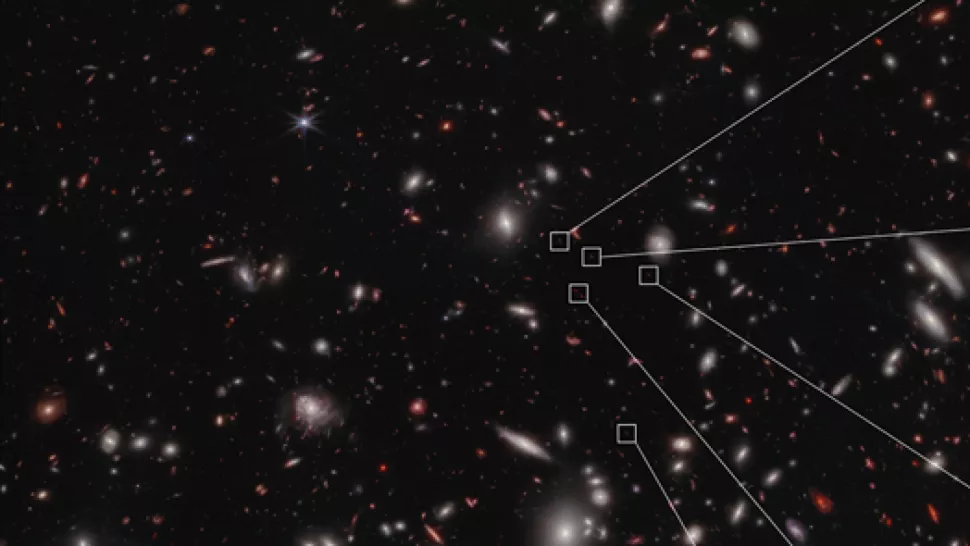
The James Webb Space Telescope (JWST), which was launched into space in 2021, has found seven galaxies which make up a massive cluster in it’s early stages of evolution.
Researchers believe the galaxies formed around 650 million years after the big bang, which is also called the “Redshift 7.9”. According to the data they collected, this cluster will most likely grow in size. It’s expected to be resemble the Coma Cluster, which is one of the largest galaxies in the universe.
“This is a very special, unique site of accelerated galaxy evolution, and Webb gave us the unprecedented ability to measure the velocities of these seven galaxies and confidently confirm that they are bound together in a protocluster,”
Takahiro Morrishita, WebbTelescope.org
The team also determined the galaxies are moving about 2 million miles per hour, through a halo of dark matter. This information was determined using Webb’s Near-Infrared Spectograh (NIRspec). They were also able to build a picture of what the cluster would look like today – a dense cluster of galaxies with thousands of individual member galaxies.
Image Credit:
IMAGE: NASA, ESA, CSA, Takahiro Morishita (IPAC)